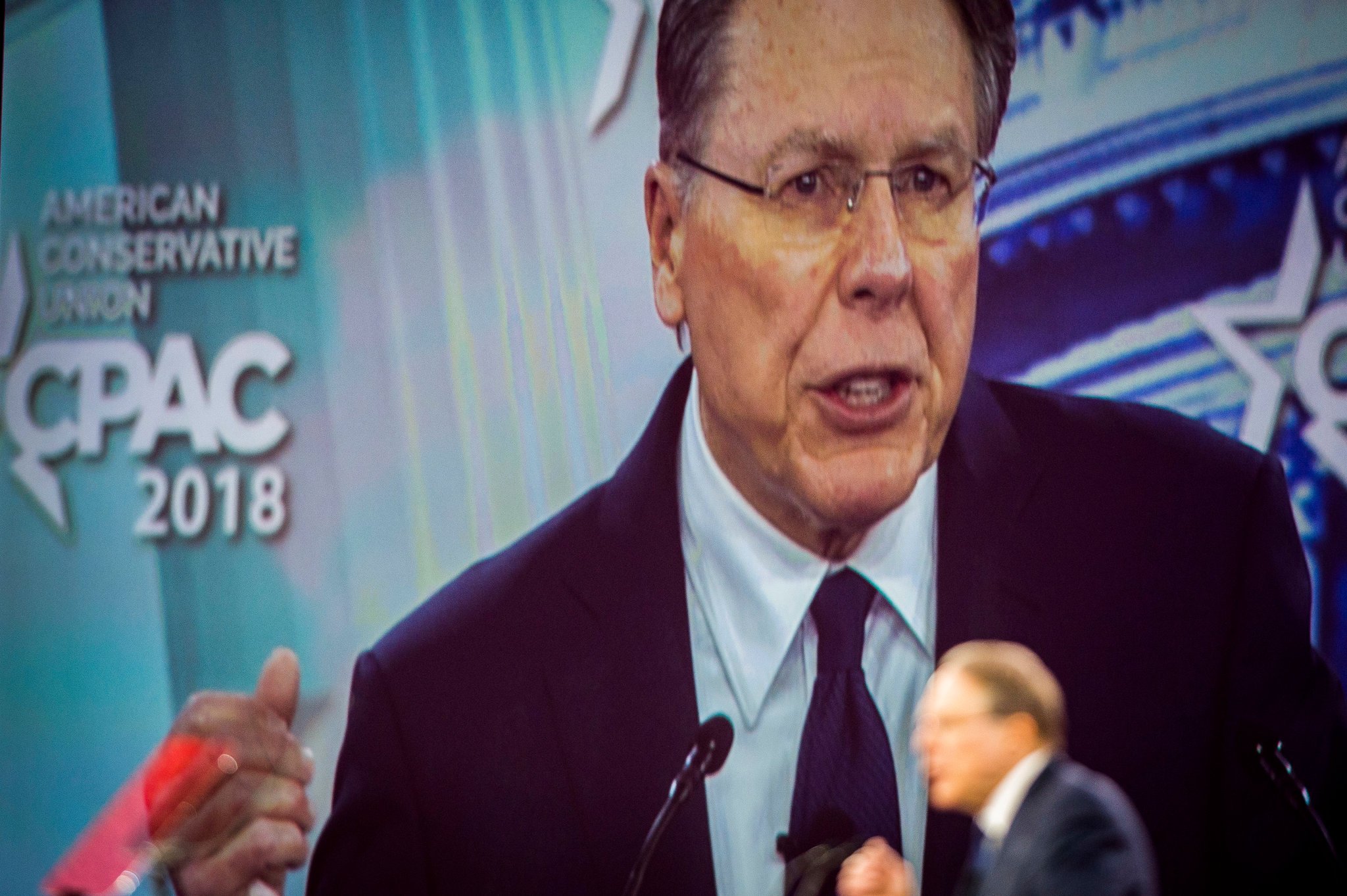
By evening, one anti-gun group had mobilized and already sent out its first email: “RESOURCES + EXPERTS AVAILABLE: Florida High School Shooting.” Another group, Everytown for Gun Safety, founded and financed by Michael Bloomberg, the billionaire former New York mayor, activated the 1,500 members of its “survivors network,” and soon paid $230,000 for an advertisement in The New York Times shaming pro-gun lawmakers.
The National Rifle Association followed its own playbook: remaining silent for several days — a recognition that its message might be unwelcome during the initial burst of grief. But it used its NRATV channel to argue to its members that more guns in schools could prevent massacres. Sales of so-called bump stocks, which can make a semiautomatic weapon fire like an automatic, rose out of fear that they would be banned.
The battles waged after shootings in Newtown, Conn.; Orlando, Fla.; Las Vegas; and Sutherland Springs, Tex., began playing out all over, presumably heading toward the same stalemate.
But this time, a few things are different: The gun control side has developed a well-financed infrastructure that did not exist when Mr. Barden’s son Daniel and other schoolchildren were fatally shot at Sandy Hook. Within days of the Parkland shooting, one anti-gun group flooded Florida lawmakers with 2,500 calls and 1,700 emails opposing a bill allowing guns in schools.
Another difference is an unpredictable president who belongs to the National Rifle Association and promotes the N.R.A.-favored solution of arming trained teachers but has also embraced a couple of modest gun control measures opposed by gun rights groups.
And perhaps most dramatically, the We-Call-B.S. teenagers of Florida have injected a passionate new energy into a stale debate, organizing demonstrations, flooding the Statehouse in Tallahassee, composing songs, creating protest signs, confronting politicians and taking to TV airwaves with an intensity and composure and power rarely seen in recent years.
“The initial reaction was the same kind of sickened resignation — this is one of the worst ever, and this probably won’t be enough either,” said Matt Bennett, a founder of Third Way, a center-left advocacy group in Washington.

Credit
Pete Marovich for The New York Times
“What has changed since then is the kids and the extraordinary, galvanizing force they have become,” he added, interrupting an interview to take a call from his 17-year-old son, whose class was leaving school to march to the White House. “No one knows when we are going to hit a tipping point on this issue. We may have hit it — we don’t know. But if we did, it’s because of them.”
Still, veterans of both sides said the fundamental dynamics of Washington have not changed. If President Barack Obama could not pass gun control in a Democratic-majority Senate in 2013, months after Sandy Hook, they said, it was unlikely that Mr. Trump and a Republican-controlled Congress would.
The N.R.A. remains as potent as ever, and the debate resumes as Republicans head into a primary election season when many worry about challenges from the right. In December, the House passed a bill to bolster criminal background checks before gun purchases, but Republicans paired it with a provision requiring states to allow anyone to carry a concealed weapon if they are allowed to carry one in their home state, essentially making it a national right, anathema to Democrats, who have their own liberal base to satisfy.
Gun rights advocates also plan to focus on the failure of the F.B.I. to pursue tips about the suspected Florida gunman, arguing that blame should be on the federal authorities, not the firearms.
“We have seen breakdowns in existing laws,” Mr. Scalise said. “Before people talk about putting new laws on the books, when we find out that multiple laws on the books were not followed, that should be the first thing we figure out.”
The rapid mobilization of the anti-gun movement is a phenomenon that has evolved with the emergence of lobbying groups filled with veteran political operatives and growing lists of supporters. By now they are used to it.
“There’s something necessarily robotic about how an organization like ours, in a professional way, responds to a mass shooting,” said Peter Ambler, the executive director of Giffords, a gun control group founded by Gabrielle Giffords, the former congresswoman who was shot in the head in 2011.
But the response has been an outpouring of support. Moms Demand Action, the grass-roots arm of Everytown, has 100,000 volunteers in every state, with an email list of four million. Since the Parkland shooting, the group has added 75,000 members. In Georgia, 1,500 people turned up Wednesday at the State Capitol to lobby for gun laws, compared with 160 last year. In Minnesota, the group had 16 RSVPs before the shooting for a meeting on Tuesday; 300 people attended.
“When Sandy Hook happened, the gun lobby was ready for us. They had been preparing for 20 years to take down those parents,” Mr. Murphy said, recalling that few Democratic lawmakers were willing to appear on television criticizing the N.R.A. “There was no anti-gun movement. It just didn’t exist.”
Now, he said, “there is an increasingly mature political movement that can combine with the unique moral authority of the kids.”
Senator Chuck Schumer of New York, the Democratic leader, said each episode cracks the wall of resistance to new gun laws. “Each time you do think it’s a little different and people will move,” he said. “You have to believe it’s cumulative and you win more support. You win a vote here and there.”
By last weekend, gun control groups were sending out fund-raising appeals. In recent days, some groups have begun quietly helping the students organize future activities, including a march on Washington on March 24 with hopes of drawing 500,000 people.

Credit
Rhona Wise/Agence France-Presse — Getty Images
On Wednesday night, a week after the shooting, Dana Loesch, the N.R.A. spokeswoman, offered the group’s first public defense of its position, enduring jeers at a CNN town hall-style meeting as she sought to focus attention away from broad new gun restrictions and toward preventing mentally ill people from buying weapons. “I don’t believe that this insane monster should have ever been able to obtain a firearm, ever,” she said.
In the days after the shooting, Mr. Trump consulted advisers as well as Chris W. Cox, the N.R.A.’s chief lobbyist. The president called Senator John Cornyn of Texas, the Republican whip, who was traveling in the Middle East, to discuss his bill with Mr. Murphy requiring states and federal agencies to report more often to the National Instant Criminal Background Check System offenses that would bar gun purchases.
“These kids, they’re organizing, they want action,” an aide told Mr. Trump.
“I want action, too,” he replied, according to another aide. “That’s why I ran for president.”
At the request of Gov. Rick Scott of Florida, Mr. Trump called a girl wounded in the attack, and afterward, the call seemed to remain on his mind, as he kept bringing it up with aides. Last Friday, he visited a Florida hospital and met victims, a visit still on his mind when he had dinner Saturday night at his Mar-a-Lago estate with his sons Donald Jr. and Eric, his daughter-in-law Lara and the Fox News commentator Geraldo Rivera.
The president noted that the injuries he saw were more grisly than those portrayed in the movies. “He was definitely horrified by the severity, the savagery of those wounds that the children suffered,” Mr. Rivera recalled. “And he kept saying, ‘How do you recover from that?’”
Mr. Trump mentioned tightening background checks. “He brought up how absurd it is that someone can buy a gun even though they’re on the no-fly list,” Mr. Rivera said. Asked for his opinion, Mr. Rivera suggested raising the minimum age to buy an assault rifle to 21 from 18.
Eric Trump, who like his brother is a big-game hunter, seemed to push back, noting that there are already more than 300 million guns in circulation in the United States, implying that new restrictions might be pointless.
But the president, in defiance of the N.R.A., has since publicly embraced the age increase and ordered the Justice Department to develop regulations to ban bump stocks.
By Thursday, Mr. Trump seemed to be following the lead of the N.R.A. again, talking enthusiastically of its proposal to arm highly trained teachers to fortify schools. Still, he has taken different views of gun laws before. In “The America We Deserve,” published in 2000 when he briefly ran for the Reform Party presidential nomination, Mr. Trump called both major parties extreme.
“The Republicans walk the N.R.A. line and refuse even limited restrictions,” he wrote. “I generally oppose gun control, but I support the ban on assault weapons and I also support a slightly longer waiting period to purchase a gun.”
Mr. Trump owns guns and has had a concealed weapon permit since 2010. When he set out to win the 2016 Republican presidential nomination, he was pressed by voters in Iowa, New Hampshire and South Carolina to support gun rights, an experience that aides said hardened his views. He dropped support for an assault rifle ban. “I love the N.R.A.,” he declared. “I love the Second Amendment.”
At the White House this week, Mr. Trump hosted an emotionally packed session with survivors of the Parkland shooting. Outside the White House, high school students from around the Washington area — including Mr. Bennett’s son — gathered, carrying signs with slogans like “Abolish the N.R.A.” and calling for legislation. “No more waiting!” one student said into a microphone.
Whether they change the outcome, the students have at least changed the debate. “It’s going to be traumatic for a long time,” said Mr. Scalise, speaking from experience. “The fact that they want to get more engaged and find out what they can do to help to prevent this, I think, is courageous.”
Continue reading the main story
Powered by WPeMatico

